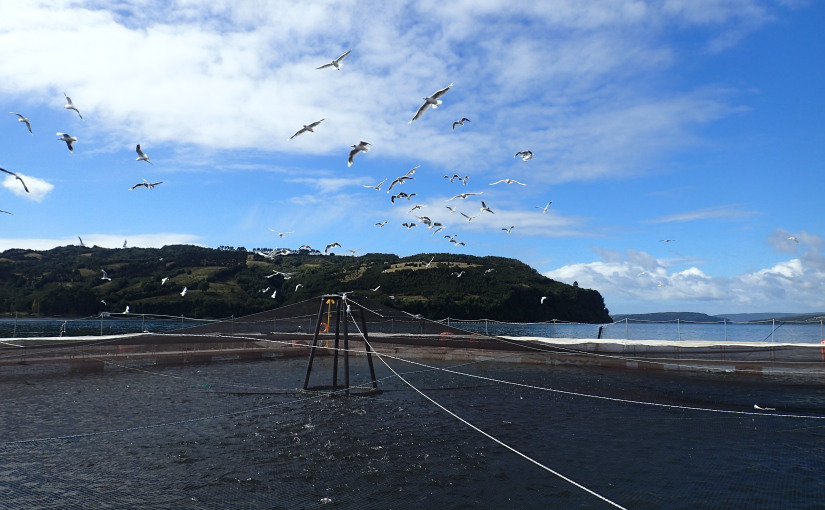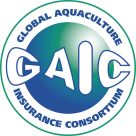
Frequently Asked Questions
Can all aquaculture units be insured by GAIC?
In principle, yes. However, the rearing system must be one that will enable the client to keep good control of the stock so that accurate records can be produced to substantiate a claim. In addition, certain rearing systems and locations may be especially prone to certain risks and comprehensive cover will therefore not always be available.
What does the stock mortality insurance cover?
The stock policy covers mortality or physical loss of the insured animals as a result of a sudden and unforeseen event. Policies can either be arranged to cover “all risks” of mortality or loss (with certain exclusions) or against certain specified perils selected by the insured. Policies will normally include total loss of market value of the insured stock resulting directly from an identified pollution which renders it unfit for human consumption. Transit cover may be included within an annual rearing policy and stand-alone transit cover may be available for larger operations.
How does the policy valuation work?
The policies are written on an “agreed values” basis. This means that the policy includes a pre-agreed basis of valuation for stock in various size ranges. This valuation forms the basis for calculating the sum insured and any claims payment. The only exception to this formula is that the policy entitles the insurers to replace affected stock rather than paying cash in the event that they can do this at a lower cost than the pre-agreed basis of indemnity.
How is the basis of indemnity worked out?
The principle of the insurance is that the client will be indemnified for the anticipated value of their stock. For stock up to market size, this value is production cost. Once the stock achieves a size at which it has a genuine sales value, the indemnity should reflect sales value (less any savings in processing and transportation which will not be incurred in the event that stock dies on site). Insureds can establish a number of valuation bands which may be based on stock age, size or weight, depending on how they keep their stock records. These bands should be designed to work in with the points in the production cycle at which stock are graded or counted.
How do I calculate the sum insured?
The sum insured must reflect the maximum insured value that the insured anticipates will be exposed during the policy period. If this figure is not high enough at the time of loss, the claims payment will be severely reduced. Insurers accept that stocking and harvesting plans can change and that this value is an estimate, which can possibly be amended during the currency of the contract if growth, mortality or marketing plans are different to what was originally projected. In order to work out this figure, the insured must project the number and size of stock which will be exposed during each month of the policy, taking account of anticipated growth, normal mortality, introduction of new stock and harvesting regime. The insured basis of indemnity should then be applied to the stock projections in order to calculate the anticipated value at risk in each month of the policy period. The largest monthly value is the sum insured.
How about premium?
Each aquaculture risk is unique and the premium rate will therefore vary from farm to farm, even for identical levels of cover. In addition, each client has different preferences for the type of cover that they wish to purchase and the premium that they can afford to pay. Each policy is therefore a tailor-made contract combining the best combination of cover and cost for that specific client. For most farms the policies are arranged on an adjustable basis which means that a deposit premium is paid initially and the final premium cost is calculated at the end of the year, by applying the premium rate to the actual values that have been exposed under the policy.
The minimum annual premium is set at around USD 10,000.
How big does a loss have to be before the policy will pay out?
Aquaculture is a high risk industry and if the insurance were to pay for each individual animal that died, the premium cost would be prohibitive. Each policy therefore contains a self-insured retention. This normally takes the form of a deductible calculated as a percentage of the value at risk at the time of loss (not as a percentage of the total sum insured or the loss amount). The precise size and means of application of this percentage will vary from client to client and has a large impact on the premium cost. This is an important aspect of the policy design and GAIC will work with clients to establish a suitable balance between risk retention and cost.
What is the procedure for obtaining a quotation?
Because each aquaculture operation is different and they all have their own particular risk profile, it is necessary to gather a lot of information to enable the Underwriter to assess the risk. A pre-risk survey is sometimes required but the normal procedure is for the client to complete a detailed application form and supply additional information (such as location maps, diagrams, photographs and stock value projections). The Underwriters will evaluate this information and decide whether a pre-risk survey will be required or whether there is enough to enable them to calculate the terms and conditions that they are prepared to offer and the cost of this cover. A variety of different options, from an expensive but very responsive contract to a more affordable catastrophe only cover, may be obtained. A pre-risk survey may sometimes be required prior to insurers quoting terms or terms will sometimes be offered subject to a survey within a certain period of the policy start date with a condition that any requirements of the survey are complied with.
Quotations will be provided with no obligation to the client to purchase any form of cover.
What happens if I have a loss?
In the event of a loss, the insurers will send an independent Loss Adjuster to evaluate the facts and the amount of a loss. Each month the insured is obliged to send in declarations of the stock numbers and sizes that have been on site in the preceding month. This information forms the starting point for loss evaluation. The policy document also provides guidance as to what the insured should do in order to assist in validating the cause and extent of loss.
What is GAIC?
GAIC – the Global Aquaculture Insurance Consortium – was set up in 2009 to insure fish and shellfish farms for stock mortality exposures that are difficult to place in the local market in most countries. The facility is administered by Lloyd’s insurance and reinsurance broker Alwen Hough Johnson Limited with capacity provided by certain Syndicates at Lloyd’s of London. The GAIC team includes a master’s qualified fisheries biologist and a master’s qualified marine biologist. Team members also have insurance qualifications and expertise. The combined team has over 50 years of aquaculture insurance expertise encompassing first-hand experience of multiple species and rearing systems in many climates and countries.
What is the security rating and global licensing position of the GAIC facility?
The Lloyd’s market that provides the security used by GAIC derives financial strength from its unique capital structure, often referred to as the ‘Chain of Security’. It provides excellent financial security to policyholders and capital efficiency for members. Lloyd’s is licensed to underwrite business in over 200 countries and territories. The Lloyd’s client base encompasses 88% of FTSE 100 companies and 97% of Dow Jones companies.
Can I approach GAIC direct?
The GAIC facility is intended to provide terms to professional insurance intermediaries. Although it may be beneficial for the client to speak directly with the GAIC Underwriters in order to establish terms and conditions, it will normally be necessary to deal with GAIC through a local insurance broker or insurance company.
Does business have to be placed via a Lloyd’s broker?
No. Risks can be accepted from any broker or insurer that is regulated by the appropriate authority in their country, is acceptable to the Alwen Hough Johnson compliance department and completes the relevant Terms of Business Agreement document.
